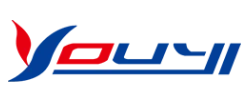Check valves are designed to prevent flow reversal in a piping system. These valves are activated by the flowing material in the pipeline.
Fluid pressure through the system opens the valve, while any reversal of flow closes the valve. Closure is achieved by the weight of the check mechanism, by back pressure, by springs, or by a combination of these means.
The general types of check valves are swing, tilting-disk, piston, butterfly, and stop.
Lift check valves
Lift check valves are typically used in piping systems where globe valves are used as flow control valves. They have a seat arrangement similar to that of globe valves.
Lift check valves are suitable for installation in horizontal or vertical pipelines with upward flow. They are recommended for use in steam, air, gas, water, and high flow rate steam lines.

Lift Check Valve
These valves are available in three valve body styles.
Horizontal.
angled and
vertical.
The flow from a poppet check valve must always enter below the valve seat. As fluid enters, the disc or ball rises from the seat under the pressure of upward flow within the pilot.
When flow stops or reverses, the disc or ball acts on the seat by return flow and gravity.
Some types of lift check valves can be mounted horizontally. In this design, the ball is suspended by a system of guide ribs. This type of check valve design is commonly used for plastic check valves.
Metal body lift check valves have seats integral to the body or contain replaceable seat rings.
The disc construction is similar to the disc construction of globe valves with metal or composite discs.
Metal discs and seat valves can be reground using the same techniques as globe valves.
Applications of Lift check valves
A lift check valve is a valve that prevents the suction line from idling, for example after the pump has stopped and therefore no longer needs to be started before restarting.
Spring loaded lift check valves can be installed in almost any installation position in the pipeline. Compared to swing check valves, they have higher head loss because the deflection of flow is more significant.
Lift check valves are preferred when the application requires a smaller nominal diameter.

Lift Check Valve
How does a check valve work?
A check valve is a device that allows fluid to flow in only one direction. They have two ports, one for the media inlet and one for the media outlet. Since they allow the medium to flow in only one direction, they are often called "check valves" or "non-return valves". The primary purpose of a check valve is to prevent backflow through the system. Figure 1 shows an example of a check valve.
Check valves rely on differential pressure to operate. They require the pressure on the input side of the valve to be higher than the pressure on the output side to open the valve. When the pressure on the outlet side is higher (or the pressure on the input side is not high enough), the valve will close. The closing mechanism is different depending on the valve type. Unlike other valves, they do not require handles, levers, actuators or manual labor to function properly.
They are typically installed in applications where backflow would cause problems. However, because they are check valves, they are an inexpensive, effective and simple solution to potential problems. If the backflow is contaminated, the backflow can cause problems and therefore contaminate the upstream media. For example, the sewer will have a check valve to ensure that waste can leave but not re-enter the system.
They can also be used if the backflow would cause damage to upstream equipment and would only allow media to flow in one direction. For example, reverse osmosis filters only allow water to pass in one direction, so a check valve is installed downstream to prevent this. A variety of sizes, designs and materials are available to ensure that there is a check valve for every application.
For more information about any of types of check valves, welcome to contact us today or request a quote.














